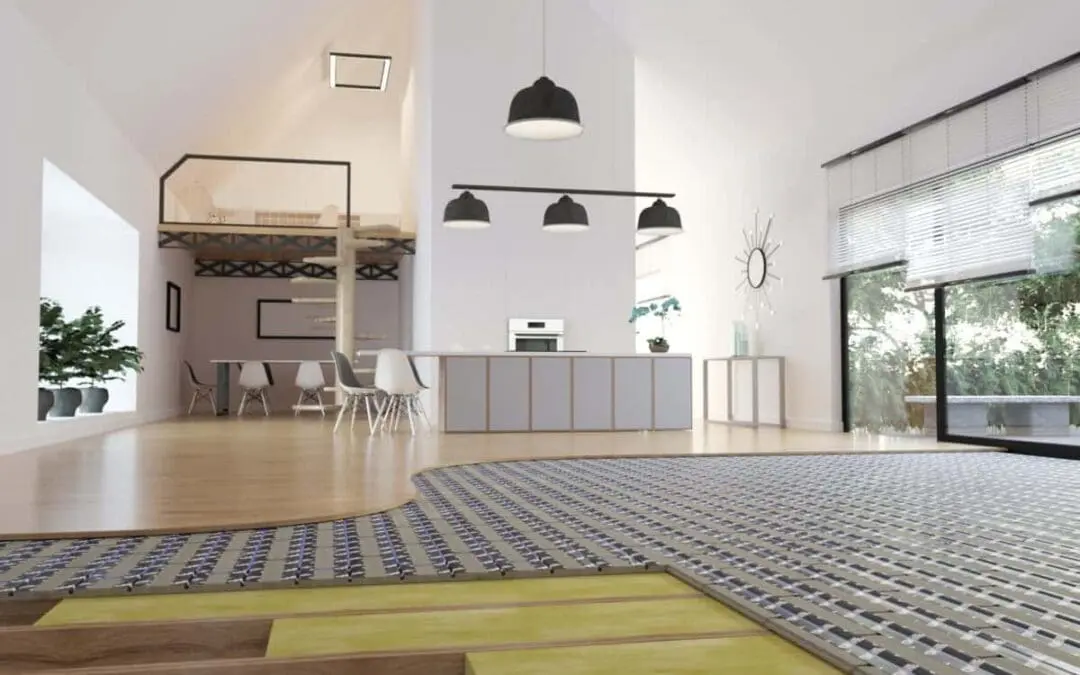Imagine coming down to the kitchen on a cold morning and feeling gentle warmth under your feet instead of a chilly floor. Or stepping out of the shower onto cozy tiles in a perfectly heated room. Or perhaps spending a day in the office and at no point feeling too hot or too cold – and being able to arrange the room as you want because there are no radiators to work around.
That’s the underfloor heating effect.
It’s a brilliant way to heat homes and buildings in an energy efficient manner that provides the ultimate comfort. No hot spots. No cold spots. Just an all-round ambient warmth from the feet up. There’s a reason it’s one of the fastest growing home improvements in the UK.
We find that once customers have experienced underfloor heating there’s no going back to conventional radiators. It’s a perfect way to provide heating in new-build projects and extensions, allowing freedom of room design thanks to the absence of radiators while delivering gentle heat that’s uniform across each room.
There are also well-documented health benefits, including an up to 80% reduction in dust mites, which don’t thrive in the warm, dry environment that UFH creates.
Our underfloor heating (UFH) systems can be part of a conventional gas boiler system or connected to a heat pump. Both use water at lower temperatures than radiators, making them more cost-effective. For UFH connected to a heat pump, the savings are even greater.
If you’ve an older gas boiler and are considering UFH then it may be worthwhile asking us about a new self-modulating condensing boiler – the lower temperatures of UFH enable these boilers to work at their most efficient, meaning even great fuel bill savings.
Our experience allows us to advise on the suitability of underfloor heating and design/install a system to suit almost any application. Our customers also have peace of mind that the most technically advanced, highest-performing system is professionally installed in their property and fully guaranteed.
Underfloor heating – simple home heating, simple energy efficiency.

